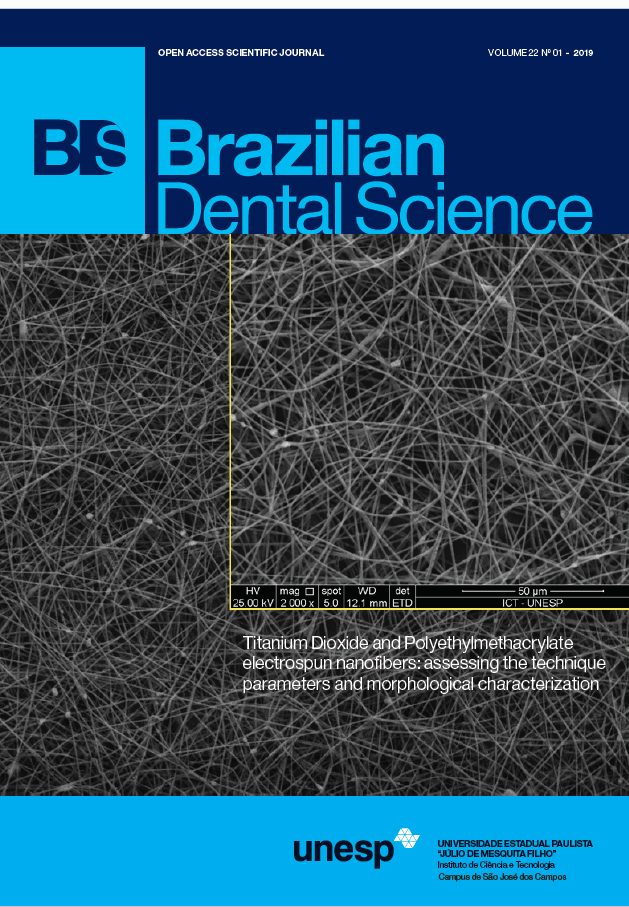Clinical and Radiographic evaluation of mixture of Zinc Oxide powder and Nanohydroxyapatite as an obturating material in primary molars
DOI:
https://doi.org/10.14295/bds.2019.v22i1.1651Resumo
Introduction: Pulpectomy is the treatment alternative in rescuing the pulpally involved carious primary teeth. Various obturating materials are being used to conserve an infected deciduous dentition. The present study documents the use of a novel obturating material in primary molars due to the disadvantages associated with of the currently used materials. Objective: To evaluate clinically and radiographically the success rate of the mixture of zinc oxide powder and nanohydroxyapatite with saline as an obturating material in primary molars and also to compare its efficiency with Endoflas. Material and Methods: Thirty pulpectomy indicated primary molars were randomly divided into two equal groups; Group I (mixture of zinc oxide powder and nanohydroxyapatite with saline) and Group II (Endoflas FS). The teeth were evaluated using various clinical and radiographic criteria at 3, 6 and 9-month intervals. The obtained results were statistically analyzed (P <0.05). Results: The overall present study findings revealed 100% clinical success in both the groups. Whereas radiographically, success reported was 66% for Group I and 100% for Group II at the end of 9 months follow-up. The difference in the radiographic success rate between the two groups was statistically significant (P <0.05). Conclusion: Endoflas FS had demonstrated high success rate both clinically and radiographically when compared to the novel combination of a mixture of zinc oxide powder and nanohydroxyapatite with saline as obturating material.
Keywords
Endoflas; Mixture of zinc oxide and nanohydroxyapatite; Obturating material; Pulpectomy; Primary molars; Endoflas.
Downloads
Downloads
Arquivos adicionais
Publicado
Como Citar
Edição
Seção
Licença
TRANSFERÊNCIA DE DIREITOS AUTORAIS E DECLARAÇÃO DE RESPONSABILIDADE
Toda a propriedade de direitos autorais do artigo "____________________________________________________________________" é transferido do autor(es) para a CIÊNCIA ODONTOLÓGICA BRASILEIRA, no caso do trabalho ser publicado. O artigo não foi publicado em outro lugar e não foi submetido simultaneamente para publicação em outra revista.
Vimos por meio deste, atestar que trabalho é original e não apresenta dados manipulados, fraude ou plágio. Fizemos contribuição científica significativa para o estudo e estamos cientes dos dados apresentados e de acordo com a versão final do artigo. Assumimos total responsabilidade pelos aspectos éticos do estudo.
Este texto deve ser impresso e assinado por todos os autores. A versão digitalizada deverá ser apresentada como arquivo suplementar durante o processo de submissão.
























